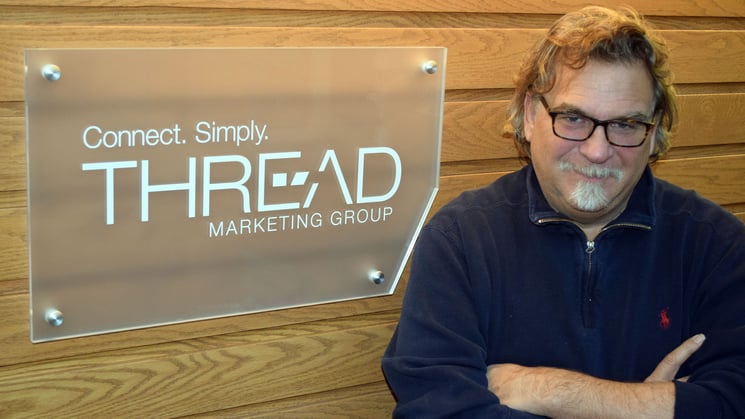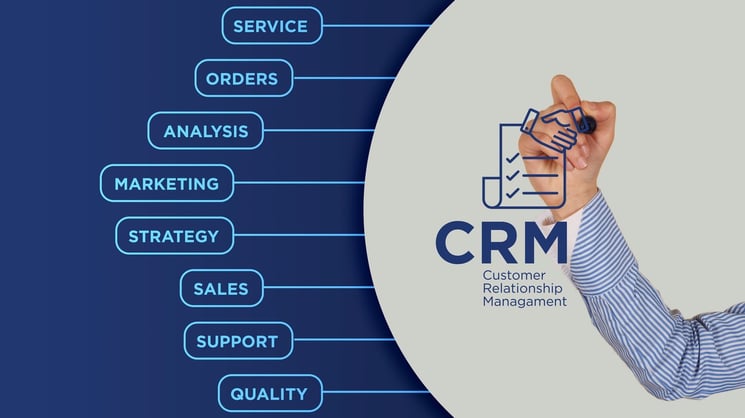We are pleased to announce that Jim Rush has joined #TeamThread as our new Vice-President, Strategic Relationships.


We are pleased to announce that Jim Rush has joined #TeamThread as our new Vice-President, Strategic Relationships.

Building marketing success with what you’ve learned

A few years ago, I challenged myself to put my experience and (debatable) knowledge on paper and draft one fundraising tip that I could share with friends, colleagues and new professionals/volunteers to the field of fundraising. While I’ve shared a few of the tips in a variety of forums, I’ve decided it’s time to bring it back. I won’t promise the tips will come weekly, but they will come and hopefully you’ll find them helpful – even if you don’t work in fundraising.


All Customer Relationship Management Systems (CRMs) are not created equal. You need to seek out one that is the right fit for your organization. In Joe Sharp's blog post last week, "Marketing your Business with CRM Software" we shared reasons that Thread chose HubSpot as our CRM. But every organization needs to find a CRM that provides you with the tools you desire but is not overwhelming to learn and use. The highest-rated CRM system is of no use if no one wants to use it.

Most established organizations recognize the importance of marketing and the effect it has on sales, customer growth and retention, brand awareness, legitimacy ... the list goes on and on. The problem is that effective marketing is not something that is "one and done." It takes time. Time for research, planning, strategy, execution, follow up and time to start all over again in today's ever-changing business environment.

Today the business environment is ever-changing, and the use of digital marketing is leaving traditional marketing in its wake, for good reason. Business operations today are more complex. Companies are challenged to understand and utilize a myriad of channels while attempting to retain existing customers and also connect with potential new customers every single day.

Sometime in your life, you’ve probably heard the old canard that the Chinese symbol for crisis is a combination of the symbols for danger and opportunity. 
It turns out to be one of those things that isn’t true but should be.
That’s because too many leaders have a one-sided view of a crisis. You can tell by the kind of language that’s used. Leaders want to:
While those things are certainly important, at Thread we think they lead to companies and nonprofits thinking defensively during crisis planning.

Our counsel is to remember that there truly are two sides to a crisis situation in our times, if not in ancient Chinese typology. Beyond merely avoiding damage to a brand, we believe that a well-handled crisis can actually increase the trust a brand has and improve it’s overall reputation. Further, that philosophy should be baked into every part of the planning process.
My favorite example came when I was working for a local retail business with a high profile in our region. One of the company’s employees had been caught fraudulently providing an add-on service to customer’s orders. He was due to be charged by the County Prosecutor following a thorough investigation.
By traditional measures, there was no reason for my client to be damaged. An employee was cheating the company as well as the customers. The company had discovered it, reported it to authorities and cooperated with the investigation. As long as we told that story, things were likely to be fine.
Even so. our counsel was to think bigger. As with any situation, you want to tell your own bad news and not leave the key details in the hands of others, if at all possible. Our recommendation was to mail a letter to every customer, self-report what had happened, take responsibility and then offer a small gift to compensate. Timing was key: the letter had to hit between the time when the employee was notified of his indictment but before the media found out. What we told the client:
“If we do that, your trust will not just be protected. People will trust you more.”
We executed that plan and were pleased with the results. Because we told the story and told it first, we were credited by consumers for having nothing to hide. We weren’t concerned about a lurid headline sidetracking public opinion. And we had done the right thing—all the way down the line—and people were going to see it.
The feedback to the company was excellent. Numerous people said that they believed more in our client than they had before. Just as important was what didn’t happen: customers who walked in the door didn’t mention the story…customers didn’t leave…and business didn’t take a hit.
Not all crisis situations are as well set up as this one. In some cases, the company or non-profit might be more culpable than my client was in this case. I’d argue that even if that was the case, a company that makes a mistake and owns up to it and offers to make it good is well positioned to realize a long-term gain in public reputation. People understand that mistakes are made—what they don’t tolerate is spin, evading responsibility, or callous behavior.
If you’re interested in seeing how we create crisis plans that seek benefit as well as damage mitigation, let us know.

A rebrand can be a powerful force for change. The decision to do so is never taken lightly. In fact jumping into a rebrand prematurely can result in a significant waste of time, money and energy. All of which are often scarce resources in a nonprofit environment.

I’ve worked in a lot of different industries and companies throughout my career. Many of these were for-profit companies, but the majority of my professional experience comes from the not-for-profit sector. And in seeing the view from both sides of the fence, I’ve found more similarities between these two sectors than I think most people realize.

If you're not using an integrated marketing strategy, then you might want to rethink your approach. Executing an integrated marketing campaign is really all about identifying the channels that work best for your company or organization and leveraging them to make the most impact. But to ensure success, it's important to understand and expand upon past success. Gathering critical information and marketing intelligence is an important part of any integrated marketing strategy. Understanding and using the right analytics to track and measure success is not only important for the success of a current campaign but for future campaigns as well.